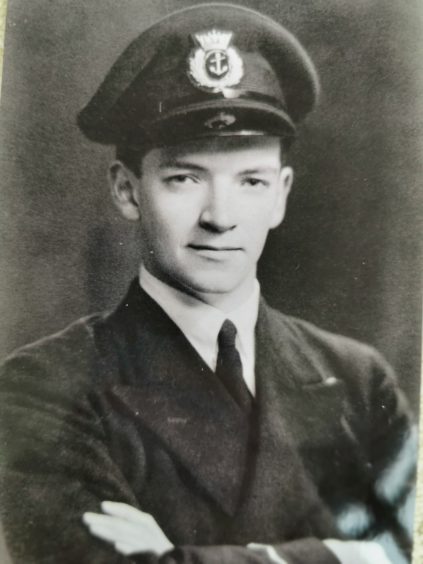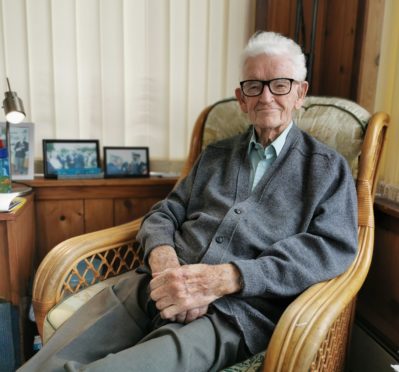A North WWII veteran has shared his story of bravery to mark Remembrance Day.
Former Merchant Navy sailor David Craig, now 94, received the King’s Commendation for helping to dispose of an unexploded bomb that had crashed through the deck of his ship during an attack in Russia in 1943.
Mr Craig, originally from Nairn, joined the Dover Hill merchant ship as third radio officer and sailed as part of a 28-vessel strong convoy from Scotland to Murmansk on February 15, 1943, with a cargo of weapons, military vehicles and explosives.

The Dover Hill survived the onslaught of attacks from the German Luftwaffe on their journey. On arrival in Murmansk, Mr Craig’s ship dropped off its cargo but, anchored in the Kola inlet, came under attack once again on April 4.
Mr Craig, who is now based in Kilmarnock, said he was blown off his feet by one bomb, adding: “I looked behind me and there was a nice hole through the steel deck where another 1000-pound bomb had gone right through.”
The captain ordered him to signal the British Naval Officer to Murmansk to ask whether any bomb disposal personnel, but none were available.
Mr Craig said: “The captain gave everyone three choices: Take a lifeboat to shore for safety, stay aboard and work the ship, or volunteer to get the bomb out of the bunker.
“Now, I was 18 years of age and I knew it was a bit of a stupid thing to do, so I hesitated for a minute, but the officer next to me who had a wife and two kids stepped forward, so what could I do but also join the squad. Altogether, 19 of us volunteered.
“We only had a few shovels borrowed from our stokehold and 19 stout hearts when we started digging back the coal trying to find the bomb. We didn’t know we’d have 22 feet to dig before we got to it.”
After two days and nights of hard work, the team finally got the bomb up on deck. Amazingly, the squad even inscribed their names on the bomb before the disposal began.
Next, Mr Craig put himself forward to support a Russian Red Air Force Officer in removing the detonator.
He said: “He started to hammer the side of the detonator. Every time he hit it, the hairs on my neck stood up straight against my duffel coat.
“He got it moving and unscrewed it and said the bomb was safe, so we dumped it over the side into the Kola inlet, where it probably lies to this day.”
Five Senior Officers were awarded the Order of the British Empire (OBE) and 14 sailors, including Mr Craig, received the King’s Commendation for brave conduct.
Mr Craig worked his way up to Chief Radio Officer and sailed all over the world for the rest of the war. He settled in Kilmarnock, working in the knitwear industry.
He said: “When I was in Russia, I never thought of being courageous,” he said. “All we wanted to do was to stay alive and stay in one bit.”
The grandfather-of-four and great grandfather-of-10 now lives with very poor sight due to eye condition macular degeneration, but is supported by charity Scottish War Blinded.
The charity have provided him with a vision impairment-friendly tablet that helps him keep in touch with his family and friends in Russia.
Scottish War Blinded gives free support to former servicemen and women of all ages, no matter if they lost their sight during or after service.
